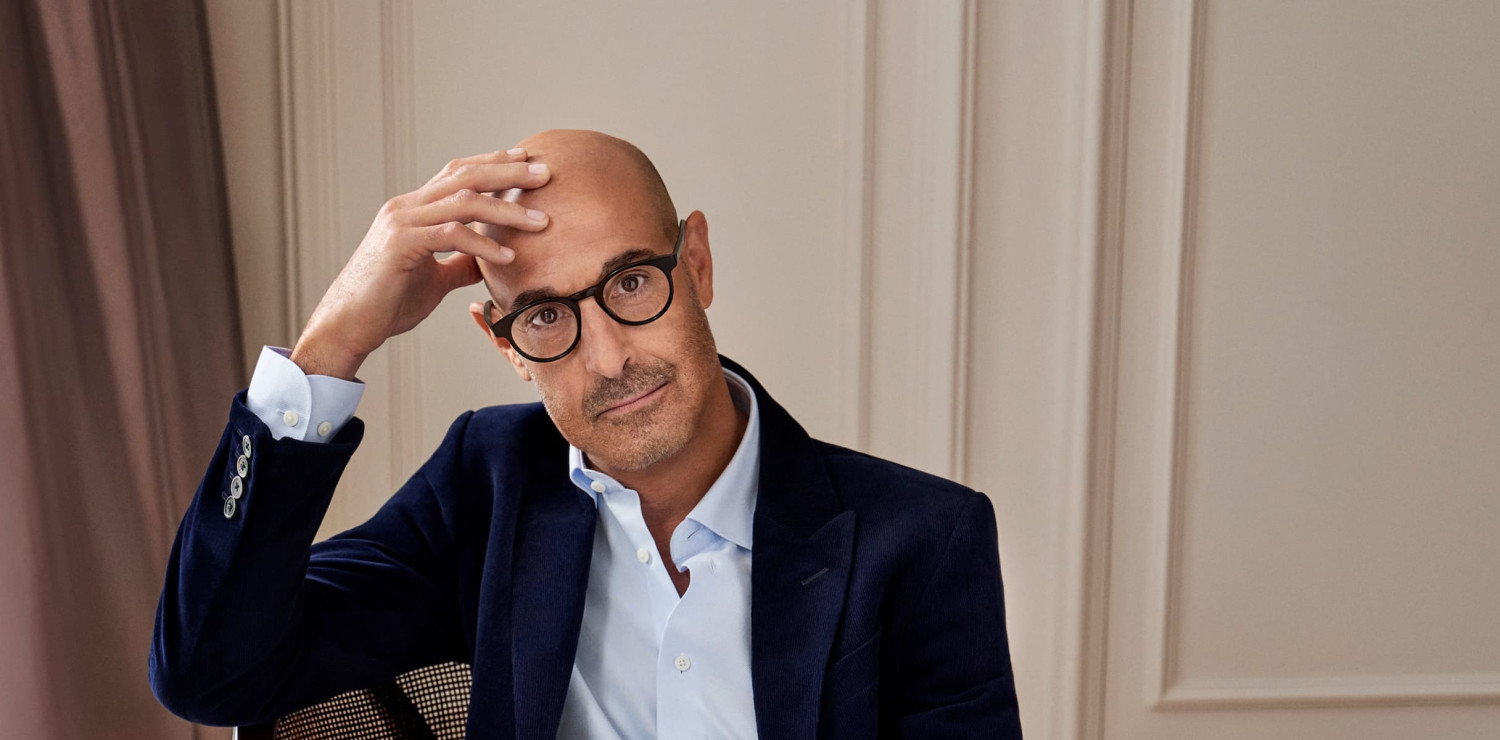The Florentine youth of Stanley Tucci
The famous New York actor talks about himself, ahead of his exclusive TV series dedicated to Florence and Italy
He has an ancient-looking face, an Italian face, Stanley Tucci, an actor from New York co-starring with Tom Hanks in the movie “The Terminal” by Spielberg.
He has black eyes, the eyes of an emigrant, full of cleverness and hungry for life. But, most of all, his is a New Yorker’s face, a Little Italy face, smelling of poverty, Italian cooking and immigrants’ stories.
Like in that beautiful movie, Big Night, that tells the story of two brothers running a restaurant which is failing and whose battle for life, survival and dignity lasts the time of an extraordinary dinner: a show of pride rather than a dinner. Preparing a “timballo” is a challenge with God.
Stanley Tucci won everything for that work: Robert Redford’s Sundance Film Festival, the New York Film Critics Circle Award, the Boston Society of Film Critics Award, two Golden Globes.
Today he is one of America’s most popular actors. Since his debut in Prizzi’s Honor directed by John Houston (1985), he has done 80 movies. And after The Devil Wears Prada in which he plays the role of a fashion expert, he starred in another seven movies.
What we are about to tell you is his “Florentine” story, a story very few know about. As many American actors, Tucci is of Italian origins and is descended from Italian immigrants. Ellis Island Museum’s website lists 1,200 Tuccis who, in the early twentieth century, emigrated to America. One of these was Stanley Tucci’s great-grandfather.
Stanley’s father, an art teacher, very keen on Michelangelo and Leonardo’s works, moved to Italy in the ‘70s, to Florence, to be precise. Stanley was eleven years old. It was the year 1972 and Stanley attended a secondary school called “Gaetano Pieraccioni”.
Does Stanley Tucci remember all this?
“Of course I do- he says when we meet him with his girlfriend in Milwaukee, Wisconsin-. I remember when I went playing soccer in piazza....what is the name?....piazza Cosseria (now Piazza della Costituzione)”. Only the boys who used to play soccer there, grazing their knees and even fighting now and then, know the name of that small plot of land between the Mugnone river and Via dello Statuto. But it was all an eleven-year old boy needed.
“I remember that there were some brave, strong boys, true leaders. One was named Palagi, do you remember him?”. I do remember him because I used to live in that neighbourhood and played soccer with that American boy wearing eye-glasses and tennis shoes. We also went to the same school. Over thirty years later, we met at a cinema festival and for a week we saw the same movies and attended the same dinner parties. Every time, Stanley walked up to me and said: “Hey, my schoolmate. I am nostalgic about those days, when I had hair- Stanley laughs- I think I have a photo of us playing soccer somewhere”.
The schoolmate Stanley Tucci wore glasses, he was bit awkward and he only took interest in English classes during which he taught English to everybody else. He was good in art too, he has always been an art lover, just like his father. But most of the time he kept to himself.
“I lived in Via Crispi, a residential area near the Medicean Fortress and I walked to school. School was strange to me: I didn’t know a word of Italian and I felt like a stranger. I remember the gym class: in New York we just grabbed a ball and played basketball or volleyball. Instead, in Florence I had to serve the ball perfectly, otherwise no game. Once, twice, three, one thousand times over and over again. No, volleyball wasn’t my thing. Is my Florentine experience the reason why I have never been keen on sports and became an actor instead?”
Then he writes down his American phone number and when he gets to number 7, he writes it the Italian way, with the horizontal bar in the middle. “See? This is what I learned at the Pieraccioni school. In America number 7 is written without the small bar in the middle. It’s a small detail, something I brought back from Italy. Along with the love of art. I would love to play in a movie on the Italian sculptor Alberto Giacometti. The one who did those very thin, elongated, nervous sculptures. He put all the pain of art in his creations”. To be precise, Giacometti was not Italian but Swiss. However, when you come from America, Via Crispi, Lugano, the beautiful, mysterious Russian church we saw on the way to school every morning, are all part of the same world.
One last thing. The “timballo” the true star of Big Night. Whose recipe is it? It is said to be one of the secret recipes by Giuliano Bugialli, a food expert and international cuisine connoisseur, Florentine himself, who has been living in New York for years. “I’ve heard about Giuliano Bugialli and his fantastic books on pasta- says Tucci who is a true cooking enthusiast- they are bestsellers in the States. However, I swear before my schoolmate: I swear that “ that timballo” is my Italian great-grandmother’s recipe. One hundred years of tradition passed on to me”.









